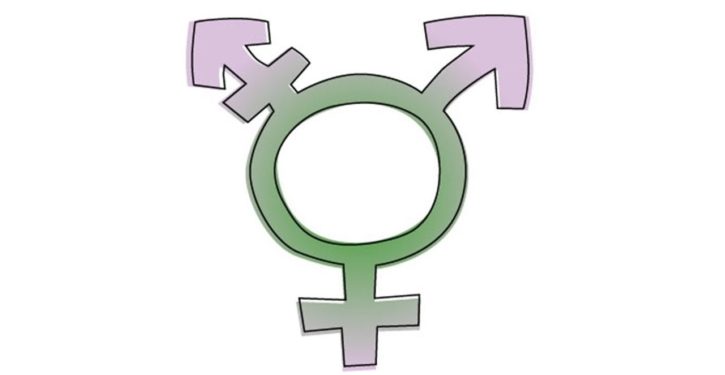
New research provides evidence that people generally have a positive implicit bias towards women and a negative implicit bias towards men, as well as a similar but less consistent implicit bias in favor of people from higher social classes. But the new research, which examined data from nearly 6,000 individuals, found inconsistent evidence for implicit biases based on race.
So begins this recent article in PsyPost that reports on a recent set of four studies.
After examining responses from 1,527 undergraduates, the researchers again found that gender “exerted effects many times larger than” race, social class, and age.
Due to the obvious implications of those findings, the researchers were leery about how they’d be received, both by potential publishers and the academic community generally. After all, the idea that humans have built-in favoritism toward women and against men runs contrary to bedrock notions of feminism that have come to be widely accepted. And, as we know, information that fails to agree with certain currently accepted nostrums often finds itself sidelined or simply removed altogether from public discourse.
But fortunately, according to one of the researchers,
“When I discuss this work with people, their reaction is often to ask if others within the academic community have responded negatively to the results,” Connor added. “And I understand the question, because ever since I started doing this work, I have felt some trepidation about sharing the results. But I have to say that virtually everyone, from editors, to peer reviewers, to academic audiences, has been genuinely receptive and willing to engage thoughtfully with these data, even if they might be surprising or run counter to some people’s priors. It has been a very welcome and pleasant surprise.”
To those of us who have, for many years, toiled in the fields of actual gender equality, those results are indeed quite welcome, but in no way a surprise. We can cite far too many instances in which women are favored (sometimes at the expense of men) and men aren’t.
Now, studies of implicit bias regarding race have long been criticized as lacking the two requisites of good scholarship – reliability and validity. Replicating their results has been hard and establishing validity impossible. There’s simply little-to-no evidence that a person who tests as implicitly racially biased in fact behaves that way in everyday life.
But each of the four studies was designed to compensate for methodological problems in implicit bias research, so the results, taken as a whole, are likely more reliable than we might otherwise expect. More importantly, in the case of anti-male/pro-female bias, we in fact have a wealth of information that powerfully corroborates those findings and lends validity to them in the process.
Do we view and treat men and women differently? Of course we do. Had we not, homo sapiens would have perished long ago. Our differing treatments of men and women are a matter of evolutionary necessity, so our doing so today simply continues learned behaviors required for survival. Therefore, however much we now argue for gender equality, we still treat men and women differently.
As a matter of evolutionary psychology, when we meet a new person, our brains record the sex of that individual before anything else. We do so because historically (and to an extent presently) our behavior toward that individual depends to a huge degree on their sex. If it’s a man, we need to figure out if he’s a physical threat to us; if it’s a woman, she’s likely not one.
More importantly, for the survival of the species, women are far more valuable than men. A single male can impregnate many females, but for almost all human history, women stood a good chance of dying in childbirth. So did the child, or, if not then, before reaching sexual maturity. Plus, human females typically produce but a single offspring following a relatively long gestation period. If that offspring managed to survive, he/she took a long time to reach sexual maturity and spent years being utterly dependent on either mother or the group, using but not providing resources. All that militated strongly in favor of the preference for women that persists to this day.
Meanwhile, men were largely expendable. A group with a 1:10 male: female ratio could survive; the converse couldn’t. That strongly suggested that men be the ones to fight off dangerous predators and hostile human groups bent on acquiring territory and resources. Therefore, females tended to mate with bigger, faster and stronger males, i.e., the ones who could give the best protection to women, children and the group. The pronounced sexual dimorphism we see throughout human evolution is the clear evidence for that sexual selection on the part of females.
Moreover, of the five basic personality traits identified by social science, females score much higher on the trait of agreeableness than do men. As before, that probably has an evolutionary component: agreeability stimulates protective behavior in males that therefore promotes survival. But whatever the underlying cause, being agreeable pretty much by definition encourages others to see an individual in a positive light.
The same may hold true of women’s tendency toward higher anxiety (neuroticism) than is found in men. It too may encourage the same protective behavior that promotes the survival of women and therefore children and therefore humankind.
In short, much of what we have long known supports the findings of the studies reported in the PsyPost article and so lends validity to them. Do people generally prefer women to men? We do. Our entire evolutionary past required it, so it’s no surprise that a study of implicit bias so finds.
Time and again, the church of the progressive woke finds itself hoist on its own petard. Church members invented implicit bias studies in order to “prove” endemic racial prejudice. They did a very poor job of that, but similar inquiries into gender bias powerfully demonstrate our everyday preference for women over men and therefore urge public policies to educate about and counteract that bias.


